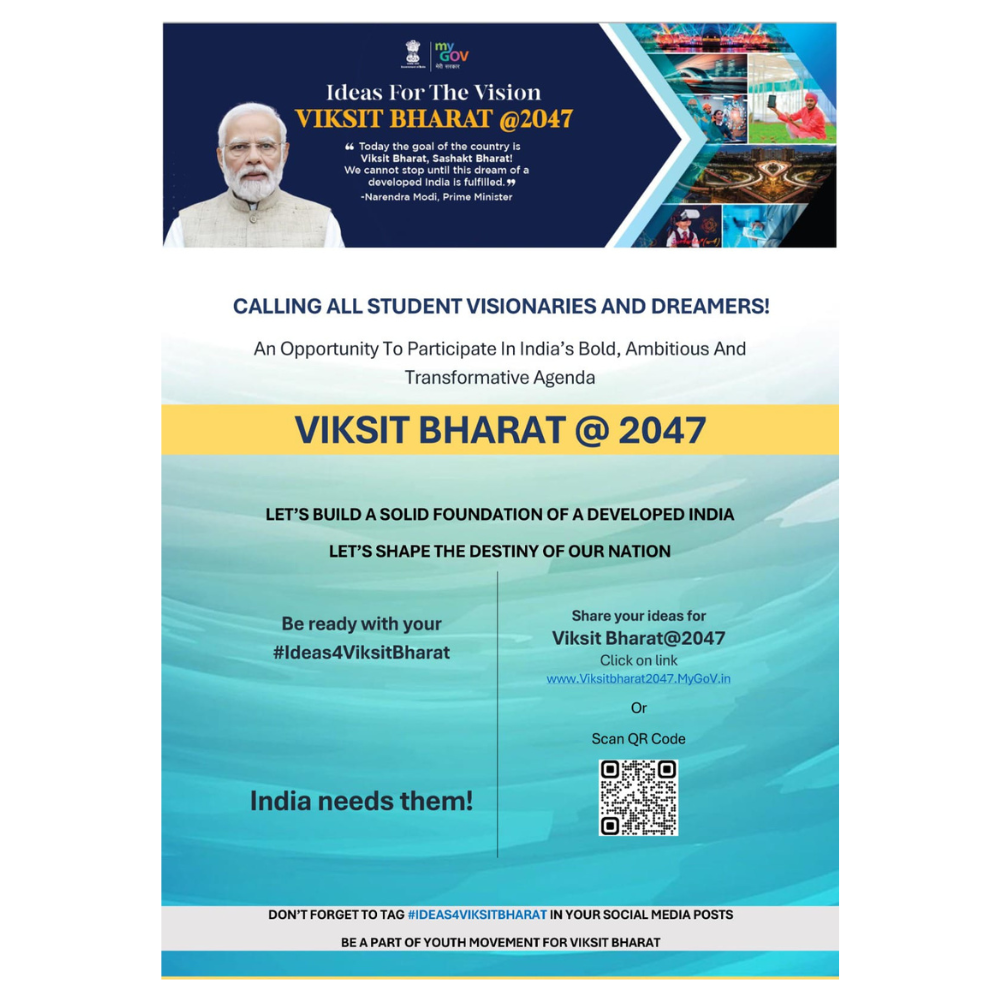
- rohitrshahi@cusb.com
- rohitrshahi@gmail.com
- :
Specialization :
Experimental Condensed Matter Physics, Material Science
EXPERIENCE : Teaching 8 Yrs / Research 15 Yrs
Our group is working on the synthesis characterizations and functional properties of nanocrystalline multi-component alloys HEAs. We have successfully designed and developed nanocrystalline HEAs for soft magnetic materials. We have also synthesized low density novel high entropy alloys which have balance magnetic and mechanical properties. We are working in the area of high entropy oxides and their super capacitive properties. Also we are working in the area of different hydrogen storage materials such as HEAs, FeTi based system, MgH2.
- Publications:
- *Rajesh Mishra, Rohit R. Shahi A systematic Approach for Enhancing Magnetic Properties of CoCrFeNiTi-based High Entropy Alloys via stoichiometric variation and annealing Journal of Alloys and Compounds 81 (2020) 153534.IF 4.17 Corresponding Author
- *Rajesh K Mishra, Rohit R Shahi A novel low-density semi-hard magnetic Al20Fe20Mg20Ni20Ti20 high entropy alloy Journal Magnetism Magnetic Materials volume 516, (2020) 167342 Corresponding Author
- *RK Mishra, RR Shahi, AR Singh, PP SahaySynthesis, characterizations, and magnetic properties of FeCoNiTi-based high-entropy alloys Emergent Materials Volume 3, 2020,
- *Rajesh Mishra, Rohit R. Shahi, Novel Co35Cr5Fe20Ni20Ti20 High Entropy Alloy for high magnetization and low coercivity, Journal of Magnetism and Magnetic Materials Volume 484 , AUG 2019, Pages 83-87. ISSN: 0304-8853IF 3.046 Corresponding Author
- *Rajesh Mishra ,P.P.Sahay, Rohit R. Shahi, “Alloying, Magnetic And Corrosion Behavior Of Alcrfemnniti High Entropy Alloy” Journal of Materials science Volume 54, Issue 5, 2019, pp 4433–4443IF 2.993 Corresponding Author ISSN: 1573-4803
- *Rajesh Mishra ,Rohit R. Shahi, “Effect of Annealing on Phase formation and their Correlation with Magnetic Characteristics of TiFeNiCrCo HEA”Materials Today: Proceedings (2019) 18 (3), 1422-1429Corresponding Author
- *Rajesh Mishra ,Rohit R. Shahi, “Effect of Annealing Conditions and Temperatures on Phase Formation and Magnetic Behaviour of CrFeMnNiTi High Entropy Alloy” Journal of Magnetism and Magnetic Materials Volume 465, 1 November 2018, Pages 169-175.F 3.046 Corresponding Author
- *R. K. Mishra, C.S.PrajapatiRohit R. Shahi, A. K. KushwahaP.P.Sahay “Influence of electrodeposition modes on the electrochemical performance of MnO2 films prepared using anionic MnO4− (Mn7+) precursor” Ceramics InternationalVolume 44, Issue 5, 1 April 2018, Pages 5710-5718. ISBN 0272-8842IF 3.057 as Co- Author
- Rohit R.Shahi, Rajesh K. Mishra, VivekShukla, Ashish BhatnagarO. N. Srivastava“Enhanced hydrogenation characteristics of Li-Mg-N-H system catalyzed with TiO2 nanoparticles; a mechanistic approach” International Journal of Hydrogen EnergyVolume 42, Issue 49, 7 December 2017, Pages 29350-29359 ISSN: 0360-3199 IF 4.229First & Corresponding Author
- *Rajesh Mishra ,Rohit R. Shahi, “Phase evolution and magnetic characteristics of TiFeNiCr and TiFeNiCrM (M= Mn, Co) high entropy alloys”Journal of Journal of Magnetism and Magnetic Materials 442, 2017, Pages 218-223
- Rohit R Shahi T.P. Yadav, M.A. Shaz, O N Srivastava “Synthesis characterization and hydrogenation behaviour of as quenched Ti41.5+XZr41.5-XNi17 (x=0, 3.5, 11.5 and 13.5) nano quasicrystalline ribbons Journal of Physics: Conference Series 809 (1), 012011 First & Corresponding Author
- Rohit R. Shahi, Ashish Bhatnagar, Sunita Pandey, Vivek shukla, T P Yadav, M A Shaz and O. N. Srivastava “MgH2-ZrFe2Hx nanocomposites for improved hydrogen storage characteristics of MgH2International Journal of Hydrogen Energy 40 (2015) 11506-11513.IF 4.229 as First & Corresponding Author
- O.N Srivastava, T.P. Yadav, Rohit R Shahi, Sunita K Pandey, M. A Shaz and Ashish Bhatnagar “Hydrogen Energy in India: Storage to Application2” Proc Indian Natn Sci Acad81 No. 4 September 2015 pp. 915-937. ISBN 03700046 As Co- Author
- Vivek shukla, Ashish Bhatnagar, Sunita Pandey, Rohit R. Shahi , T P Yadav, M A Shaz and O. N. Srivastava “On the synthesis, characterization and hydrogen storage behavior of ZrFe2 catalyzed Li-Mg-N-H hydrogen storage material” International Journal of Hydrogen Energy 40 (2015) 12294-12302 F 4.229 as Co- Author
- S K Pandey, A Bhatnagar, Rohit R Shahi, TP Yadav, O.N.Srivastava“Co-Catalytic Effect of Carbon Based Nanostructures and TiO2 on Sorption Behavior of Nanocrystalline MgH2”Advanced Science Letters 20 (2014) 1120-1123 IF 1.253 as Co- Author
- Ashish Bhatnagar, Sunita K Pandey, Rohit R Shahi, M.A.Shaz and O.N.Srivastava“Catalytic effect of carbon nanostructures on the hydrogen storage properties of MgH2–NaAlH4 composite” International Journal of Hydrogen Energy 39, 2014 1440-1446 IF 4.229 as Co- Author
- Rohit R. Shahi, Ashish Bhatnagar, Sunita Pandey, Viney Dixit and O.N.Srivastava“Effects of Ti-based Catalysts and Synergistic Effect of SWCNTs-TiF3 on Hydrogen Uptake and Release from MgH2”International Journal of Hydrogen Energy 39 (2014) 14255-14261.IF 4.229 First & Corresponding Author
- Devinder Singh, Rohit R. Shahi, T.P. Yadav, R.K. Mandal, R.S. Tiwari, O.N. Srivastava “Hydrogenation of (Zr69.5Al7.5Cu12Ni11)100 − xTixquasicrystalline alloys and its effect on their structural and microhardness behavior”Journal of Non-Crystalline Solids 380 (2013) 11–16 ISBN 0022-3093IF 2.488 Co- Author
- Ashish Bhatnagar, Sunita K Pandey, Rohit R Shahi, M Hudson, MA Shaz, ON Srivastava “Synthesis Characterization and hydrogenation studies of mixed sodium potassium alanate”Crystal Research and Technology Volume 48, Issue 8, pages 520–531, August 2013 ISBN 1521-4079IF 1.122 Co- Author
- Sunita K. Pandey, Ashish Bhatnagar, Rohit R. Shahi, M. Sterlin Leo Hudson, Milind K. Singh, and O. N. Srivastava “Effect of TiO2 Nanoparticles on the Hydrogen Sorption Characteristics of Magnesium Hydride”Journal of Nanoscience and Nanotechnology Vol 13, 2013, 1–7, ISBN 1533-4899IF 1.354 Co- Author
- Rohit R. Shahi, HimanshuRaghubanshi, M.A. Shaz, O.N. Srivastava “Improved hydrogen storage performance of Mg(NH2)2/LiH mixture by addition of carbon nanostructured materials”International Journal of Hydrogen Energy38, 21,2013, 8863–8871.IF 4.229First Author
- .P. Yadav, D. Singh, Rohit.R. Shahi,M.A.Shaz, R.S.Tiwari and O.N.Srivastava “Synthesis of quasicrystalline film of Al-Ga-Pd-Mn alloy”Thin Solid Films 534,2013, 265-269 ISBN 0040-6090IF 1.939 Co- Author
- Rohit R Shahi, Anand P Tiwari, M.A.Shaz, O.N. Srivastava, “Studies on de/rehydrogenation behavior of MgH2 co-catalyzed with Ti, Fe and Ni” International Journal of Hydrogen Energy. 38(2013) 2778-2784 IF 4.229 First Author
- Rohit R Shahi, Himanshu Raghubanshi, M.A.shaz, O.N. Srivastava “Studies on the de/re-hydrogenation characteristics of nanocrystalline MgH2 admixed with carbon nanofibresApplied Nanoscience (2012) 2:195-201. ISBN 2190-5517 IF 2.951First Author& corresponding
- T.P.Yadav, Rohit R Shahi, O.N. Srivastava,”Studies on Synthesis Characterization of AB2 (ZrFe2,Zr(Fe0.75V0.25)2, Zr(Fe0.5V0.5)2) Type Hydrogen Storage materials”International Journal of Hydrogen Energy 37 (2012)pp 3689-3696.IF 4.229 First Author
- Rohit R. Shahi, Himanshu Raghubanshi, M.A. Shaz, O.N. Srivastava, “Studies on the de/rehydrogenation characteristic of Mg(NH2)2/LiH mixture admixed with carbon nanofibres” International Journal of Hydrogen Energy37 (2012) pp 3705-3711.IF 4.229 First Author
- T.P. Yadav, Devinder Singh, Rohit R Shahi, M.A.Shaz, R.S.Tiwari and O.N.Srivastava“Formation of quasicrystalline phase in Al70-xGaxPd17Mn13 alloys”Philosophical Magazine (2011) 91 (19-21), 2474-2481 ISBN 1478-6443IF 1.632Co- Author.
- Rohit R. Shahi, T.P. Yadav, M.A. Shaz, O.N. Srivastava “Studies on dehydrogenation characteristic of Mg(NH2)2/LiH mixture admixed with vanadium and vanadium based catalysts(V,V2O5andVCl3)”International Journal of Hydrogen Energy, 35 (2010) pp 238-346 IF 4.229 First Author
- Rohit R. Shahi, T.P. Yadav, M.A. Shaz, O.N. Srivastava “Effects of mechanical milling on desorption kinetics and phase transformation of LiNH2/MgH2 mixture” International Journal of Hydrogen Energy 33(2008)6188-6194.IF 4.229 First Author
- M. S L Hudson, P.K. Dubey, D. Pukazhselvan, S. K Pandey, R K Singh, H. Raghubanshi, Rohit R. Shahi O.N. Srivastava “Hydrogen energy in changing environmental scenario: Indian context”,International Journal of Hydrogen Energy 34 (2009) pp. 7358-7367 IF 4.229 Co- Author National Journal
- N Srivastava, T.P. Yadav, Rohit R Shahi, Sunita K Pandey, M. A Shaz and Ashish Bhatnagar “Hydrogen Energy in India: Storage to Application2” Proc Indian Natn Sci Acad 81 No. 4 September 2015 pp. 915-937. ISBN 03700046 As Co- Author
- Rohit R Shahi, M.A. Shaz, O. N. Srivastava (2014) “Potential Hydrogen Storage Materials” Publisher LAP LAMBERT Academic Publishing, Germany, (International) ISBN 978-3-659-62169-7.
- Rohit R Shahi, Rajesh K Mishra “High Entropy Alloys: As a Potential Magnetic Materials” for inclusion in bound volume on HIGH ENTROPY ALLOYS: Innovations, Advances and Applications CRC Press (July 2020)
- *Rohit R Shahi“Beneficial Effects of Graphene on Hydrogen Uptake and Release from Light Hydrogen Storage Materials” Book “Hydrogen Storage Technologies” Editor Mehmet Sankir, NurdanDemirciSankir Pages 229-262 ISBN 978-119-45988-0, Publisher: John Wiley & Sons (International), (July 2018)
- *Rajesh K Mishra, Rohit R Shahi “Magnetic Characteristics of High Entropy Alloys” Book Magnetism and Magnetic Materials” Pages 67-80 678010.5772/intechopen.74235Publisher: IntechOpen (International) (2018). ISBN 978-1-78923-679-8
- Rohit R Shahi, ON Srivastava “Catalytic Application of Carbon‐based Nanostructured Materials on Hydrogen Sorption Behavior of Light Metal Hydrides” Book Advanced Carbon Materials and Technology Pages 129-171, ISBN 9781118686232, Publisher John Wiley & Sons (International) (2014).
- Awards:
- Young Scientist Award (Materials science) 2014; From Indian Science Congress Association (Rs 25000 Award Amount and citation)
- Young Scientist Award 2017; Indian association of Hydrogen Energy and Related advanced Materials, University of Kerala Trivendrum (Rs 20000 Award Amount and citation).
- INSPIRE FACULTY award by Department of Science and Technology, India (2012).
- Focused Area Science research fellowship Indian Academy of Sciences (May 2020)
- Projects:
- Title: Nanocrystalline High Entropy Oxides and High Entropy Alloys as Reversible Energy Storage Materials Funding agency (SERB SRS scheme) Research Grant and Duration: 16 Lakhs for 2 years (ongoing)
- Title: Studies on Nanoparticles Decoration in Supercritical Fluid to Improve the Sorption Behavior of Most Promising Storage Material e.g. Mg Funding agency DST, (INSPIRE Faculty Award) Research Grant and Duration: 35 Lakhs for 5 years (completed)
-
Research facilities available in Functional Materials Research Group
- Mechanical Miller The developed indigenous mechanical milling facility is available for the synthesis of different nanomaterial. The deigned planetary type mechanical miller has facilities for millings at high RPM under high pressure reactive milling (under hydrogen pressure/inter gas). Also this miller has twin motion possibility (Circular and Spin). The developed mechanical miller significantly produced several nanomaterials having particle size in the range of 20-30 nm. Moreover this facility has been utilized for the synthesis different nanomaterials for hydrogen storage application and mainly for the synthesis of nanocrystalline High Entropy Alloys and other nanoamterials and alloys
- Glove Box Facility: In order to synthesize nanocrstalline MgH2/Li-Mg-N-H materials it was required that the materials must be transferred in a glove box to avoid the formation of oxide compound. Once the surface oxide and/or oxide compound is formed the material could not able to absorbed hydrogen. An automated glove box has been procured from Biostag for aforesaid purpose.
- Vacuum Sealing Arrangement: An indigenous vacuum sealing technique is also developed at Department of Physics. Through this technique we will able to seal the synthesized materials under vacuum to study the effect of phase transformation and magnetic characteristics after annealing at different temperature.
- Programmable Vertical Furnace: A programmable vertical tubular furnace is available for temperature program desorption measurements as shown in adjacent Figure. This is a seven step programmable furnace can operate up to 1100oC.
- Programmable horizontal Tubular Furnace for the synthesis of carbon based nanostructure materials, various ZnO nanostructures and metallic nanoparticles and compounds through auto combustion
- Magnetic Stirrer with Hot Plate Two High precession Magnetic stirrer with hot plate working temperature upto 500oC for the synthesis of different nanomaterials/ particles.
- Silica tubes with flanges are used the synthesis/ annealing of different samples under vacuum.
- Hydrothermal Autoclave with Teflon and PPL inner lined vessel are procured for the synthesis of different nanoparticle.
- PH Meter: for the synthesis of different nanomaterials through chemical route.
- Vacuum pump: Two vacuum pums are available for various synthesis purposes. Equipments for Property measurements of different materials
- Vickers Micro-Hardness Tester: A Vickers micro hardness tester to measure the mechanical properties of the synthesized alloys and other materials is available in the lab. This micro-hardness tester has Inbuilt Camera with image analysis Software, Hardness Measuring Range: 5-3000 Hv with Test Force: 0.09807, 0.2452, 0.4904, 0.9807, 1.961, 2.942, 4.904, 9.807 N, Auto Measurement of hardness through software attached with the unit.
- Hydrogen storage property measurement setup: indigenously developed a SS reactor and arrangement for water displacement method to study the hydrogen storage characteristics of synthesized materials.
- To study the properties related to suppercapacitor and corrosion Ag/Agcl and reference electrode along with cell are available.











